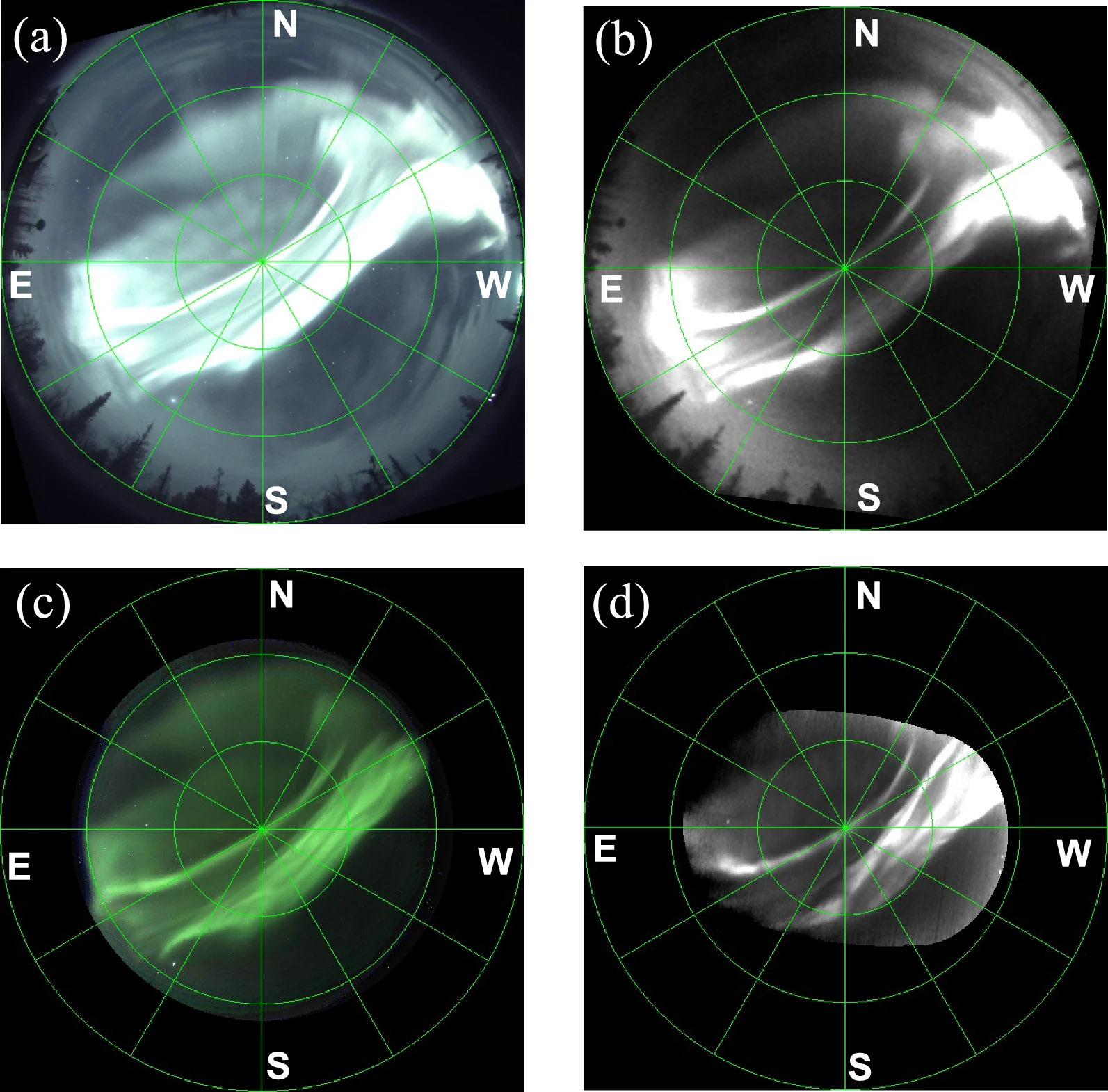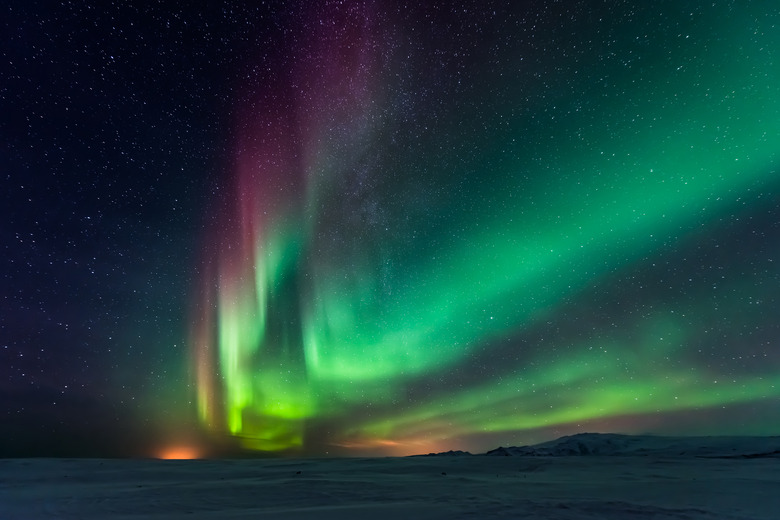Forget Everything You've Seen, This Image Shows The Northern Lights' True Colors
The first hyperspectral image of an aurora borealis shows the true colors of the northern lights. The image was captured using a new instrument called the Hyperspectral Camera (HySCAI), which is located at the Swedish Space Center's Kiruna Esrange Optical Platform Site. The instrument was installed by Japan's National Insitute for Fusion Science (NIFS), and it has given us a brand-new look at these beautiful cosmic events.
A hyperspectral image—for those who don't quite know what we're talking about—is essentially a two-dimensional image that is then broken down by colors and wavelengths. In the case of the aurora borealis, scientists will be able to study the emissions of the aurora in much more detail. More specifically, they'll be able to actually measure the amount of energy from the incoming electrons that cause the aurora and determine which specific colors light up the sky.

While other forms of auroral imaging can be filtered by wavelength in similar ways, they don't produce nearly as comprehensive an overview of the aurora, thus making this such a big deal. By using HySCAI, the researchers are able to capture the true colors of the northern lights.
To develop this technology, they first started with tech used to create the Large Helical Device (LHD), which is the largest superconducting plasma device in the world.
From there, the researchers looked at other ways to observe light emitted from plasma in a magnetic field. Because auroras are essentially charged particles from the Sun hitting our planet's magnetic field, they can also be measured in similar ways. And so, the HySCAI was created.
The researchers talk a bit more about the creation of the HySCAI and how they plan to capture the true colors of the northern lights in a research piece published in the journal Earth, Planets and Space.
